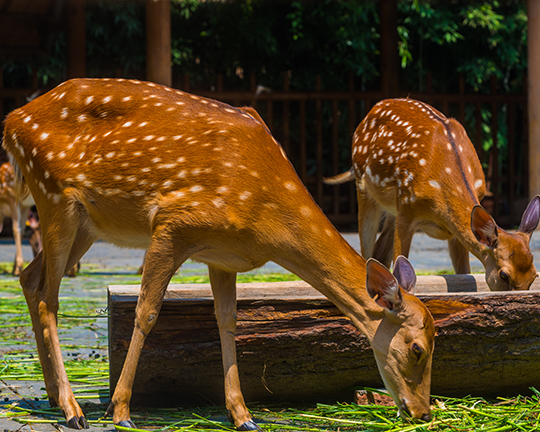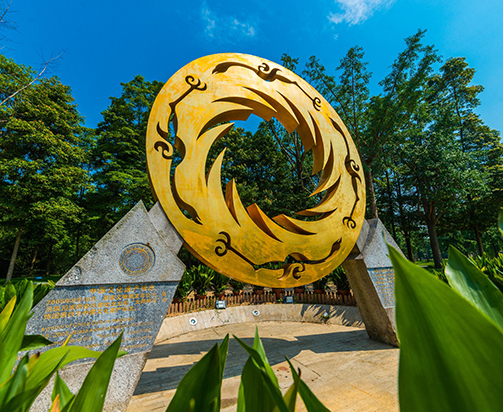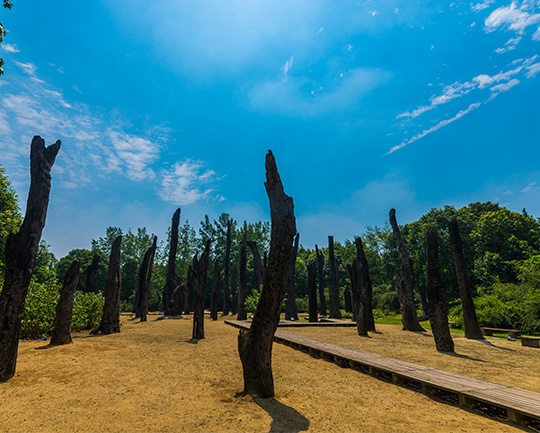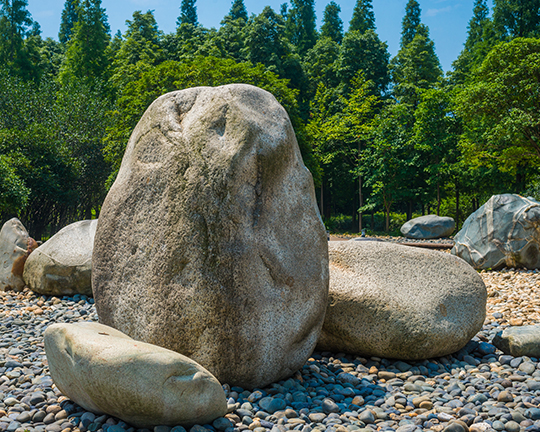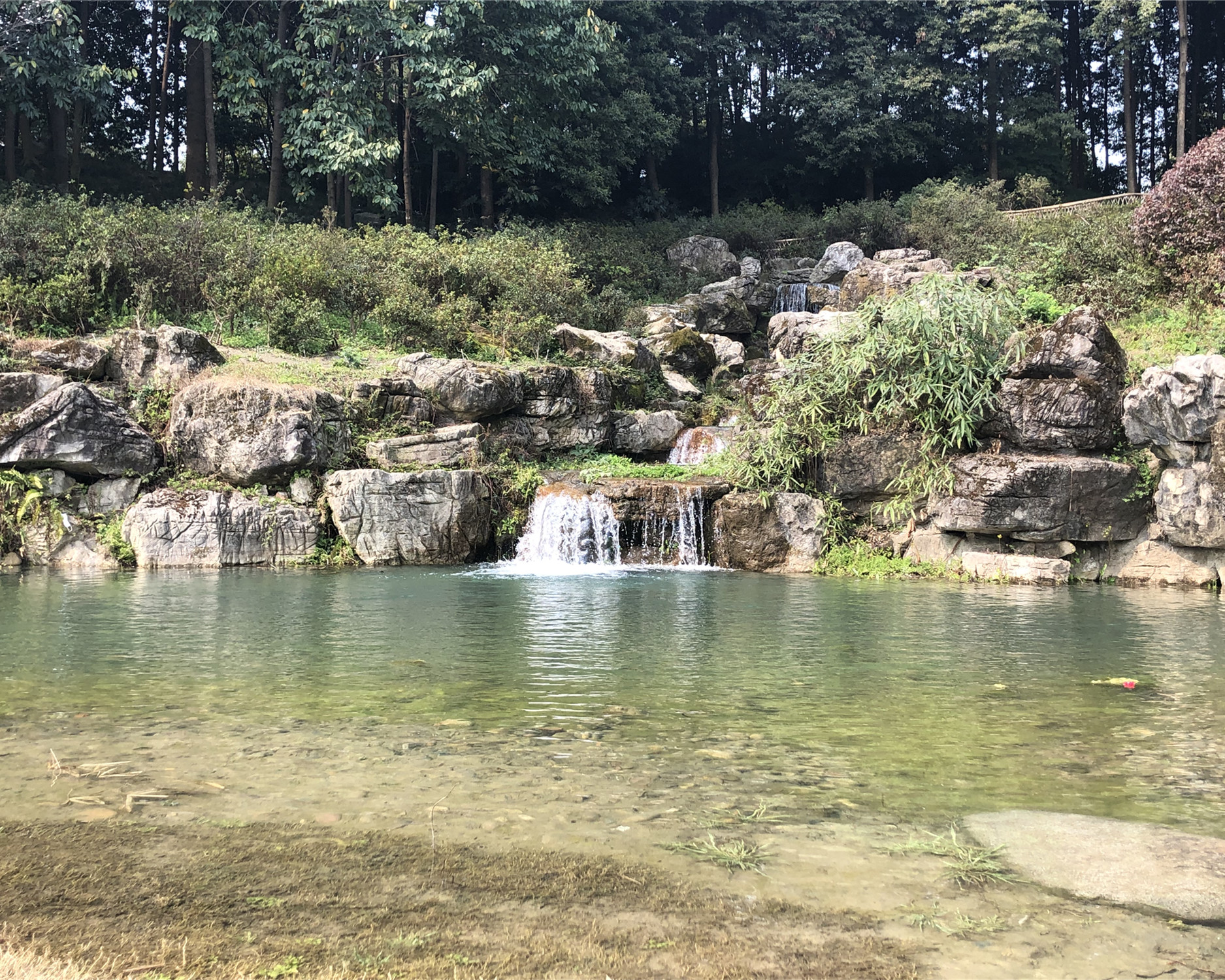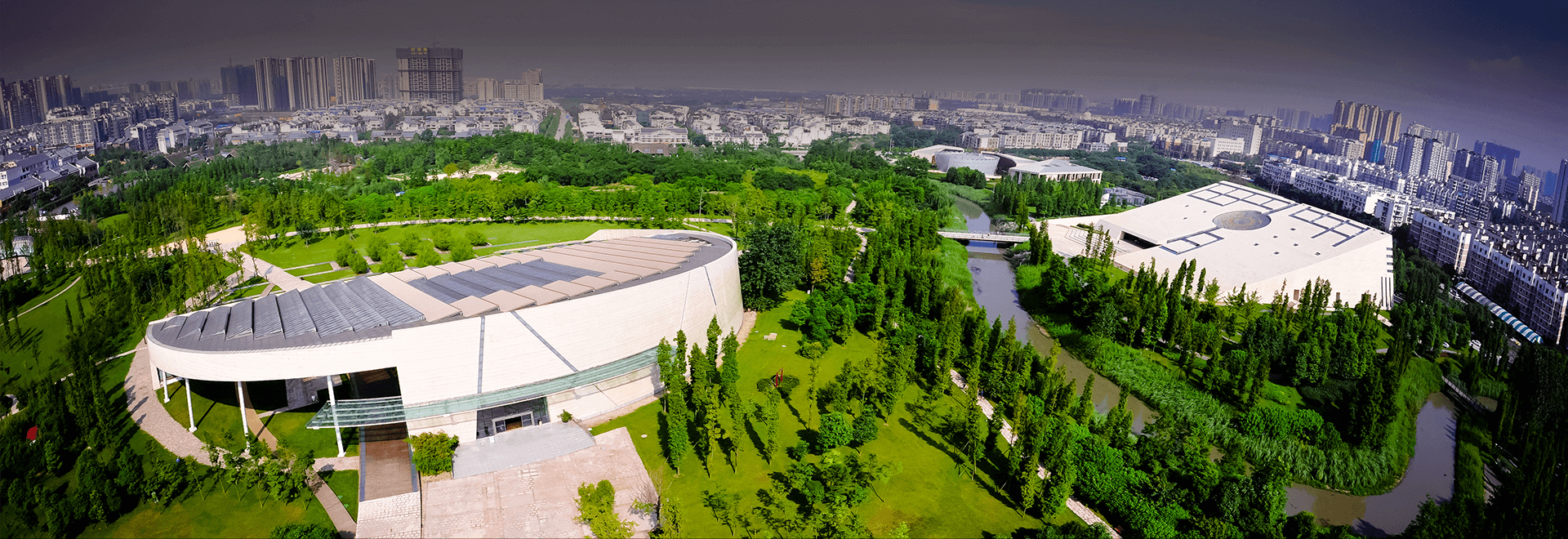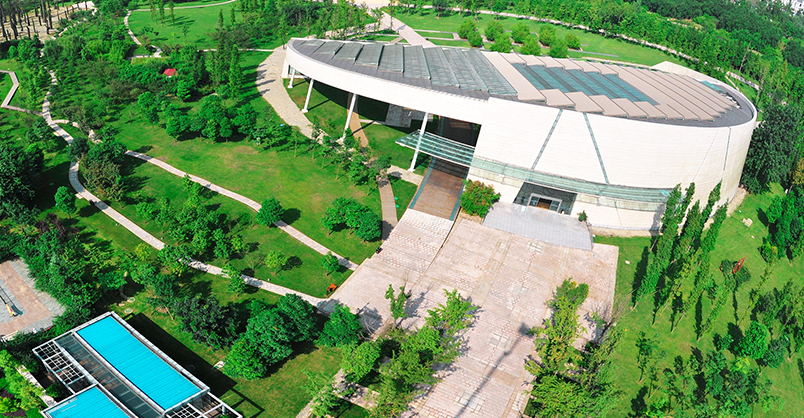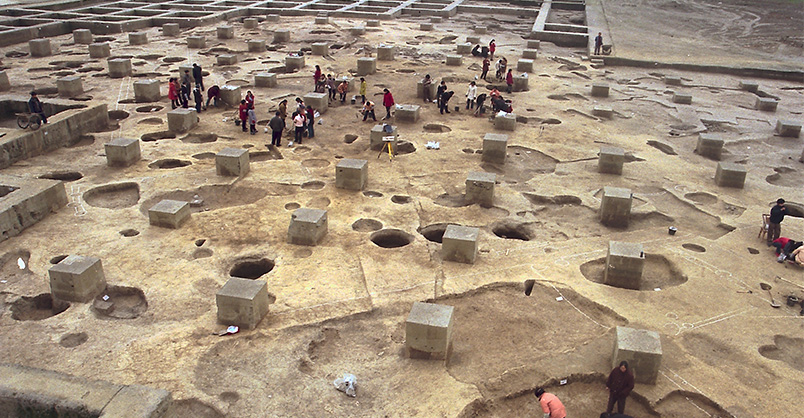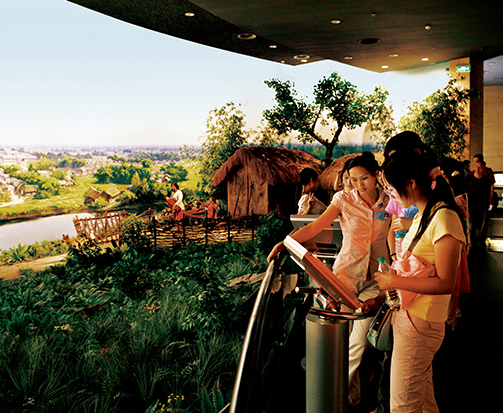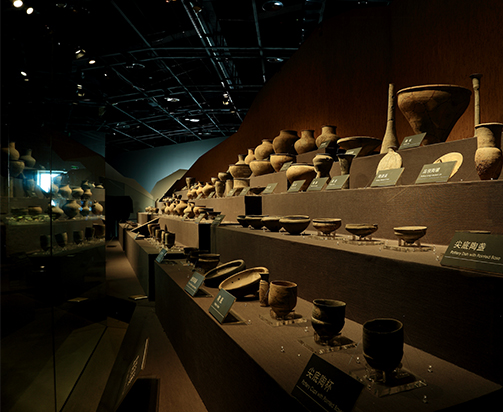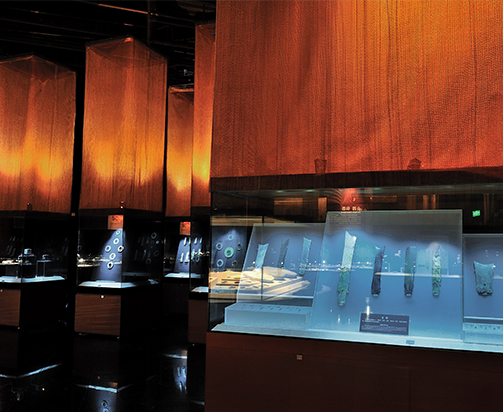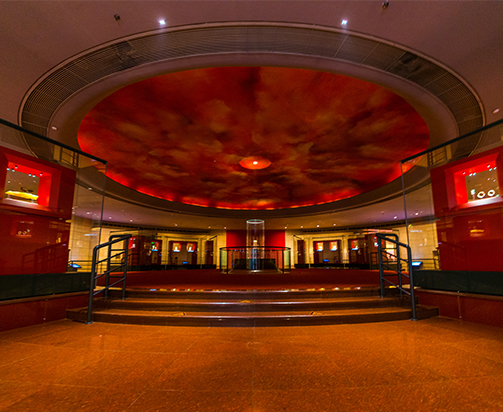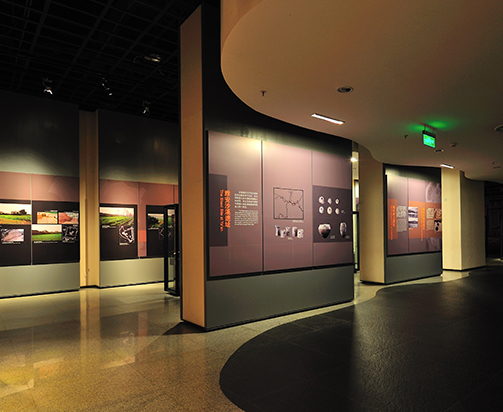Located in the Southeast corner of the Jinsha Site Museum, the Ebony Wood is a featured scenic spot making use of more than 60 ebony trees unearthed in the Jinsha Site and Chengdu area. It is a unique sight in China.
Ebony Trees, also known as Yinchen Trees (buried trees), refer to various precious ancient trees buried under ancient river beds for thousands of years. After long-term physical, chemical, and other reaction processes, they have been given textures resembling but not the same with stones or trees. With hard and fine wooden textures and clear veins, they are highly precious. Raven-black from its surface to its core, this tree variety is called ‘an ebony tree” by the Sichuan people. Mainly excavated from the Sichuan Basin, the ebony trees are one of the most precious resources in Sichuan. A Carbon-14 test reveals the ebony trees have a history of over 3,000 to 10,000 years. The site of the sacrifice area of the Jinsha Site Museum was originally called a“the Ebony Tuo,” meaning the place where ebony trees were unearthed. Plenty of ebony trees were excavated in the eastern part of the sacrifice area of the Jinsha Site.
Not all ancient trees can be converted into ebony trees. Ebony trees are usually formed from trees with aromatic or bactericidal features, such as phoebe zhennan, toona sinensis, and camphor. As the organic matter has been decomposed, an ebony tree does not deform or have insects. As a result, it is precious. As the saying goes, “Ten thousand taels of gold at home is not as good as having a cubic meter of ebony trees.” Found near the Jinsha Site and the Chengdu Plain are a large number of ebony trees, which are all living “fossils”, fully showing the good ecological environment of the Chengdu Plain in ancient times while reflecting the evolutionary process of climates in Sichuan.
